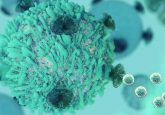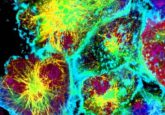Could bioengineered exosome-mimetic nanovesicles be an efficient strategy for the delivery of chemotherapeutics?
The term drug delivery refers to technologies and systems used for controlling the release, absorption and targeting of therapeutic drugs to specific diseased regions, reducing the adverse effects of therapeutics. Because drug delivery systems can increase both the efficacy and the commercial value of therapeutics, drug delivery technology has been the focus of significant scientific and industrial advances. Most of the effort has been aimed at developing nano-sized particles for targeted drug delivery systems.
Various types of nano-sized particles, ranging from 10 to 1000 nm in diameter, have been fabricated, these are also called nanocarriers, this group includes liposomes, nanoparticles and polymeric particles [1]. Nanocarriers have several advantages for drug delivery, they can provide high drug payloads, multiple drug loading and protection from drug degradation [1]. Moreover, nanocarriers are potent in tumor treatment because they achieve passive targeting of tumors via an enhanced permeability and retention effect. Various targeting moieties, including antibodies, have been conjugated onto the surfaces of nanocarriers to improve their targeting efficacy [2]. The specific interactions between the targeting moiety and the targeted molecule present on cell surfaces can lead to receptor-mediated internalizations of the nanocarriers [3]. Receptor-mediated internalization can allow the nanocarriers to bypass the multidrug resistance mechanism that is mediated by the cell’s protein pumps [3]. However, mass production of the targeting moieties at a high purity is either difficult or expensive [4]. Furthermore, artificially incorporating the moieties requires complicated and sophisticated chemical crosslinking processes that have a myriad of hurdles, including immunogenicity issues [4].
Click here to view full article.





